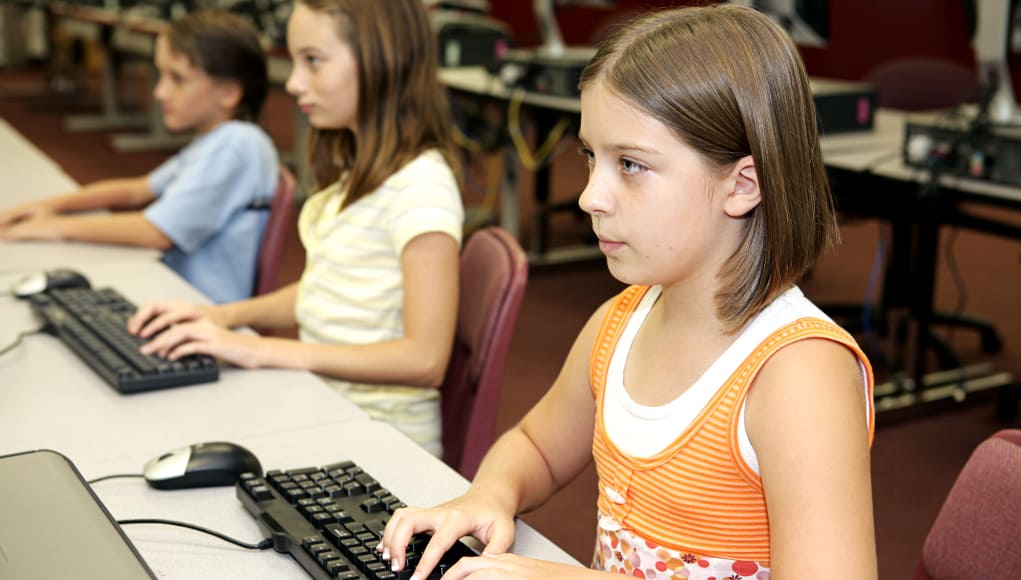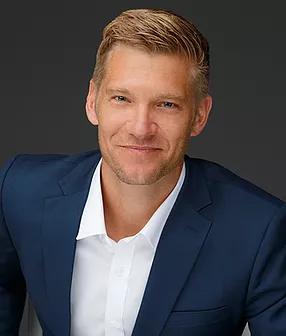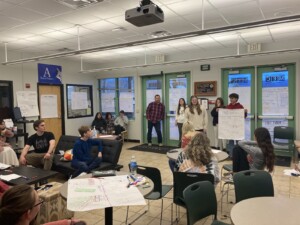The 12 Shifts for Student-Centered Hybrid Environments

A few months ago, millions of educators were forced into a worldwide experiment that none of them signed up for. Content, lessons, and assignments were rapidly shifted online. There was a lack of teacher training or an effective LMS to support the online shift and many students lacked access. This fall, things don’t look any more promising. Remote learning, or a hybrid version of it, is here to stay.
But there is a silver lining.
During the time of remote learning, our students have become more independent and empowered. They have been given more freedom in establishing their own learning outcomes, and organizing schedules and deadlines to meet them. When they return to us in the fall, whether for an in-person, hybrid, or a 100% online learning experience, we will have to offer them something different than we have in the past. Instead of disconnected, impersonalized, one-size-fits-all learning, we will need to offer our students deep, personalized, and more connected learning experiences.
Our role as a result will shift from being the ‘sage on stage,’ to a ‘facilitator of learning experiences.’ To make this transformation possible, we will have to make 12 key shifts.
The 12 shifts are the result of conversations and insights from expert practitioners worldwide, who have not only adapted to an uncertain education climate, but thrived. Each of them have placed deep, student-centered project-based learning experiences at the heart of their work. My hope is that by sharing each of the 12 shifts, along with simple tips for making them, you too can help ensure 2020-2021 is not another ‘grand uncertain experiment,’ but one that creates engaged, empowered, socially and emotionally aware citizens.
Shift #1: Learning Design.
Teacher-Designed → Co-Designed and Curated
Imagine your students, in firmly pressed suits and colorful dresses, standing next to their re-constructed models of ancient civilizations, articulating in detail to a room full of adults the reasons why they fell.
Imagine their work being so impressive that a local museum curator asked to feature it in an upcoming exhibition.
This is the kind of work Linda Amici, a fifth grade teacher, gets 10-year-old students to produce in her co-created and co-designed classroom, where students choose how they work, who they work with, and what they work on. To empower our learners and begin co-creating these kind of experiences with our students, Linda advises us to:
- Begin every learning journey by asking students what they want to know
- Organize content around topics rather than single standards
- Provide choice in how students fulfill learning objectives
Shift #2: Learning Process.
Led by Content → Led by Inquiry
Scheduling in 2020-2021 will be a nightmare if organizing learning around content minutia. Rosie Westall, an early years educator at the Steiner Waldorf School in Hong Kong, begins all her learning around student inquiry. Her democratic classroom starts by finding out what topics her students are interested in, and then organizing objectives and curriculum around it. In her ‘Future World’ project, students explore what the world will look like in 2025. They build fake eye scanners, renewable energy models, and futuristic robots. Her job as she expresses, is to “spark joy that cannot be replicated,” and “trust the process.” When we build this trust, we can “sit back and listen, and watch the little people of this world blow [us] away!” Here are Rosie’s tips to make this shift:
- Have a plan, but don’t be married to it
- Organize learning around topics and themes rather than subject-specific content
- Hold regular class meetings that give students a say in decision making
Shift #3: Content/ Skill Acquisition.
Isolated Content → Connected, Interdisciplinary
Pre-COVID, many of us were responsible for delivering content according to our subject area expertise. But in a world that’s becoming increasingly interdependent and interconnected, we need to, according to ‘Imagine If’ Founder Loni Berqvist, ‘stop looking at subjects as a body of knowledge, [but as] a lens to see the world.’ Instead of planning around our subject, Loni insists that we best serve students by planning interdisciplinary experiences that run across multiple subjects, disciplines and areas of expertise. To create these kind of experiences, Loni advises us to:
- Sit down with colleagues outside of our subject areas
- Discover where content overlaps, and which topics arouse the most common interest
- Develop long-term projects and problem-based scenarios that require our integrated content to solve
Shift #4: Motivation.
Working for a Grade → Working to Solve Problems
With several schools abandoning grades in the Spring quarter, and many colleges shifting to portfolios of work as being pre-requisites for admission, we are going to need a different way to motivate students in the 2020-2021 school year. Marc Shulman, an 8th grade math teacher at High Tech High uses real world stakes to motivate his students. Students partner with real businesses to help them solve problems ranging from marketing to potential clients to building raised garden beds. “When students see that their work isn’t simply to please a teacher, and it’s for a bigger cause …people outside their school are relying on them to complete this thing, that’s positive pressure.” To help make this shift, Marc recommends to:
- Identify problems that exist outside of school
- Identify academic content needed to solve them
- Work together with students to co-create rubrics for evaluation
Shift #5: Student Work.
Worksheets and Test-Based → Real World Product/Service
Imagine your students working remotely in small teams to design the menu, food, logo, and concept for a food truck to serve the community. Imagine them also pitching their product to real investors for a spot in the center of town. This is the kind of real work, English Teacher Brett Carrier engages her students in at Park Maitland School in Florida. Working in an integrated team, she and other teachers incorporate their subject-specific content around the needs of the project. The math teacher helps them create budgets and calculate projected profits and losses; the design teacher, 3D rendering and color coordination; and Brett, how to write a business plan and pitch the product. Students develop skills impossible to develop through worksheets and tests. To make the shift to real world products/services, Brett advises us to:
- Be flexible with deadlines
- Build in time for continual reflection
- Establish community partners to support process (they could be your friends)
- Build in academic vocabulary
Shift #6: Inquiry.
Teacher Questions → Student Questions
With continual uncertainty around what next year will look like, we will need to take a constructivist approach, where learning builds organically, with student questions driving the process. Mark Barnett, a makerspace teacher and consultant, is an expert in this approach, and uses it when building any project with his students. For example, in the Renaissance project, students were free to pursue inquiries that ranged from historical dress, to how to re-enact jousting battles, or rebuild the printing press. When you walk into his constructivist, student-centered classroom, you will find what he describes, “things you can touch … hydroponic gardens, a half-built go-kart, and tangible 3D printed items. They aren’t hidden behind a glass wall.” To become more comfortable with uncertainty, and build student inquiry in the classroom, Mark advises us to:
- Take a ‘maker mindset’ to learning and avoid perfectionism
- Transform your ‘fixed classroom’ into a flexible learning space
- Make inquiry a part of your regular routine
- Display not only final drafts but work in progress
Shift #7: Student Reflection.
Values the Product → Values the Process
When you walk into Design Specialist and Project Manager at PolyU University Alfie Cheung’s room, you are surrounded by writable surfaces covered with student work. Post-it notes, drawings, broken off pieces of cardboard, and arrows pointing in all directions fill each whiteboard. Alfie explains that this is all intentional. Leaving each board helps students “keep track of their journey.” When they need more writing space, he insists they just “roll another board in.” In his most recent project, where students redesigned a fitness area to serve cross-generational users, students used the boards to articulate the journey of their designs from first draft to final presentation. His advice for us:
- Never throw away students’ first drafts
- Provide high-quality feedback using simple protocols for students
- Celebrate the journey and failure as much as you do success
- Make the process of learning highly visible
Shift #8: Task Completion.
Independent → Collaborative
For most of us, socially distanced classrooms and remote learning conjures images of students isolated at desks, or a home completing busy independent work. But for Kristin Damburger, Learning Coach at The International School Nido de Aguilas in Santiago, while these environments might provide setbacks, if we are to create globally, emotionally, and socially aware citizens, learning must be collaborative. The best way to do this is through projects. Projects, Kristin insists, force students to not only be accountable for their own learning, but also “accountable to their peers.” Students naturally must identify their strengths, divide work, resolve differences, and pull their weight to experience success. To design these kinds of deep, collaborative experiences, Kristin urges us to “take off our subject/teacher hat” and instead become a “designer of learning.” Here are more tips:
- Balance student grouping according to readiness levels, affinity mapping, abilities, and skills
- Use highly structured processes and ongoing formative assessments like process journals to monitor groups
- Use smaller group activities to help establish structures and norms for collaboration in your blended classroom
Shift #9: Audience for Work.
Teacher → Authentic, Public Audience
Many teachers lament that remote learning has produced lower quality student work than the work they receive in the classroom. Matt Neylon, The Director of Visual and Performing Arts at Mount Vernon School, insists that low-quality work is the result of three missing pieces: a public audience, multiple rounds of feedback, and the chance for students to ‘ship work constantly.’ During the period of remote learning, Matt worked directly with students to curate and exhibit their work in virtual museums for a public audience that showcased everything from art pieces to integrated dance performances. Along the way, students had the chance to share their work with peers, their teacher, and experts. Matt insists that when students are encouraged to regularly ‘ship their work,’ they automatically elevate its quality. He advises us to:
- Exhibit all work, not just the best
- Involve students in deciding how their work will be shared
- Partner with real businesses and professionals to serve as mentors, adjudicators, or interviewers
Shift #10: Management/Evaluation.
Progress Monitored by Teacher → Students, Peers, and Experts
Before every school day begins, students in Keri Aspegren’s Montessori class spend time journaling their learning plan, reflecting on progress they made, setting individual goals, and jotting down lessons they will receive from the teacher. It is entirely up to them to monitor their progress, and conference with their teacher or fellow peers when they need help. Keri explains that while this takes a “while to set up,” the class pretty much “runs itself.” She sets up her room to allow for a steady work flow. There is no teacher desk, but an environment that is thoughtfully prepared with stations and learning materials according to each lesson. In this way as Keri laughs, she shares the class with “25 teachers.” While this kind of learning magic does take time to establish, Keri advises we:
- Create stations and establish norms for free working times
- Set up a small conference area for teacher and peer-led lessons
- Establish routines for continual work planning and reflection
Shift #11: Discussion/Learning Experience.
Teacher-Led → Facilitated/Socratic
“Stop meeting the standards the school has for you, and meet the standards the students have for you.” These were bold words from Luna Rey, a teacher of at-risk youth and former High Tech High Educator after seeing what happens when students aren’t involved in the discussion. She watched a real world project she designed ‘fall flat,’ because she didn’t capture her student’s ideas at the onset. Her next project began with a socratic discussion around questions and topics that excited them. Capturing their interests right away resulted in students coming in at lunch, and staying up until late hours of the night to complete it. To make the shift to socratic discussion and learning experiences, Luna advises us to:
- Build intrinsic motivation in kids to learn by tapping into what they care about
- Celebrate and discuss the ‘process’ of great work as much you do the ‘product’
- Discuss projects as a way to transform lives, not just to deliver content
Shift #12: Learning Delivery.
School-Based → Community-Connected
Imagine your students connecting and partnering with the community to tackle complex problems.
Working side by side with engineers, architects, and urban planners to re-design transportation systems. Partnering with local park, golf course, and Audubon societies to attract more biodiversity and wildlife. Curating work with local museums and art galleries to address social ills and increase social justice.
These are the kind of projects Jill Clayton leads with students as young as 10. Rather than confine projects to school, Jill treats her students as miniature anthropologists, historians, and citizen scientists, finding problems and using ingenuity to solve them. As Jill puts, ‘community members are our co- teachers.’ To make this shift, Jill recommends we:
- Develop relationships with nearby businesses
- Build maps of potential community partners and problems to solve
- Invite community members into our classrooms to co-create with students
Make the 12 Shifts Stick
Just as we can’t make the shift to effective online learning overnight, making the 12 shifts to student-centered learning will require time, support, and continual reflection.
As Winston Churchill once famously said, “Don’t let a good crisis go to waste.”
COVID-19 has been an unparalleled tragedy, but also an unparalleled opportunity to re-commit to doing what’s best for kids.
Get the interviews and free poster for the 12 student-centered learning shifts here.
Here’s to your success with the 12 shifts!
For more, see:
- The Learning Must Go On
- We Can’t Put the Genie Back in the Bottle: Designing Next-Generation Education in the Time of Crisis
- Leaning into the Innovation Opportunity
Stay in-the-know with innovations in learning by signing up for the weekly Smart Update.





Deborah Lester
Yes, it is going to take time and patience.
Deborah Lester
I like it when it says that the teach sometimes must deviate from the standards of the school and meet the standards the students have for you. Capture interest right away - what do they care about?